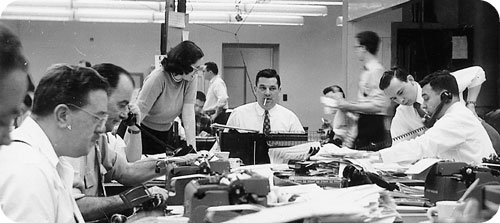
This story was produced by a student in the Madison365 Academy, Madison365’s journalism training program.
Walk into the Wisconsin State Journal newsroom — or for that matter The Capital Times or Isthmus or any Wisconsin newsroom — and you’ll see a lack of color. We are not talking about bright walls with vibrant colors; we’re talking about brown folks. The national average of people of color working in traditional journalism is roughly 13 percent, according to the Atlantic newspaper. It may not be a surprise that Wisconsin is below of that, but how short we do fall is shocking; Wisconsin’s average is a little more than zero percent, according to the American Society of Newspaper Editors 2015 Newsroom Census.
What causes the lack of people of color in journalism? Are there simply not enough that want to pursue journalism as a career?
Most Journalist of color say they went into journalism to follow their passion of sharing the untold stories of others who are not represented, just like them.
“I just ended up coming to journalism on a natural path,” says Amber Walker, a freelance journalist currently serving an editorial and technical internship with Madison365. “Because it blends my passion of writing, storytelling and advocating for communities I care about.”
Walker says her perspective as a women of color allows her not only to voice her own opinion, but provide voice for others who often go unheard. For example,.Walker was living in Florida in 2012 when Trayvon Martin was shot. She wrote an article for the Huffington Post; as an African American woman and teacher, she was able to write of the perspective of her students who were friends of Martin, something lacking in the nationwide coverage of the event.
“[I was able to] humanize the perspective of the kids,” she says. “I felt these kids’ voices were getting lost in this back and forth [debate in the media] at the end of the day these kids saw someone who represents their identity murdered essentially in cold blood. And the message the state is sending is that their lives don’t matter.”
Last fall, Madison365 columnist David Hart called out the lack of diversity in Madison’s newsrooms, saying media are not able to properly engaged with their communities because they aren’t properly representing them. Hart said “There are currently no reporters of color on staff at the two major Madison newspapers,” which turns out to have overstated the case; a State Journal columnist pointed out that the Capital Times had just recently hired one African American reporter, Ogechi Emechebe. Madison365 followed up article apologizing for the error, but sticking to the contention that the media in Madison are not, generally, diverse enough.

Emechebe is the k-12 education writer for The Capital Times, which shares a building with the Wisconsin State Journal. She remains the only journalist of color working in the entire building.
“I have to be careful to not act like I’m the spokesperson for black people,” she says. “Not all of our experiences are the same, so I cannot overstep my boundaries and say, ‘Well this is how we all feel, this is how we all think’, because it’s different for all of us.”
Although Wisconsin has a lack of diversity in the journalism field, News networks in liberal Madison are making an effort to recruit more minorities in their workplace. Alexandra Arriaga, an intern for the Wisconsin Center for Investigative Journalism, says despite being the only intern of color at at her workplace she feels,”There is a lot of conversation going in the right way.”
“(The Capital Times) is doing a pretty good job at including those voices in their stores and making sure that people are being heard,” says Emechebe says. “But it could be better if they had staff members there to reflect what they’re writing about, because sometimes it’s really hard to communicate with people when you’re not necessarily part of that group or race.”
Malik Anderson, an intern for Wisconsin Public Radio, notes that coming back to his internship for the summer he has noticed that diversity there has gone up.
“It’s slowly getting better,” Emechebe says. “It obviously takes time but I have hope and we’re getting there.”




